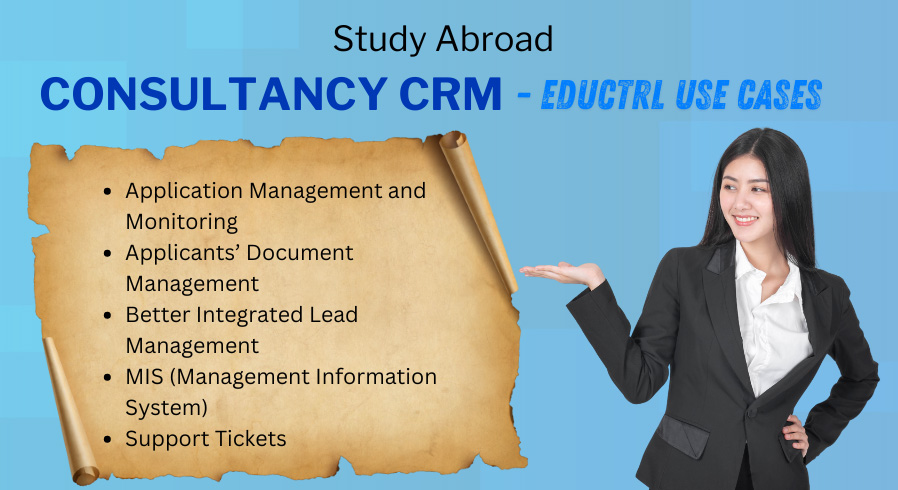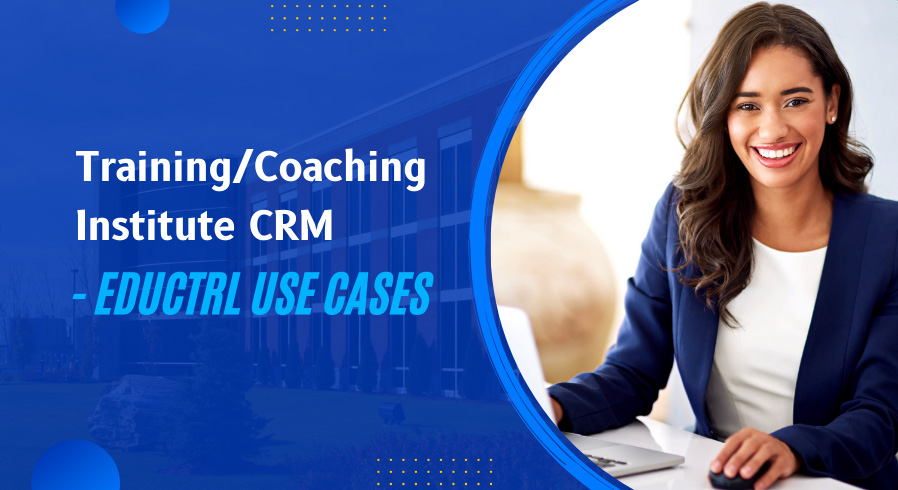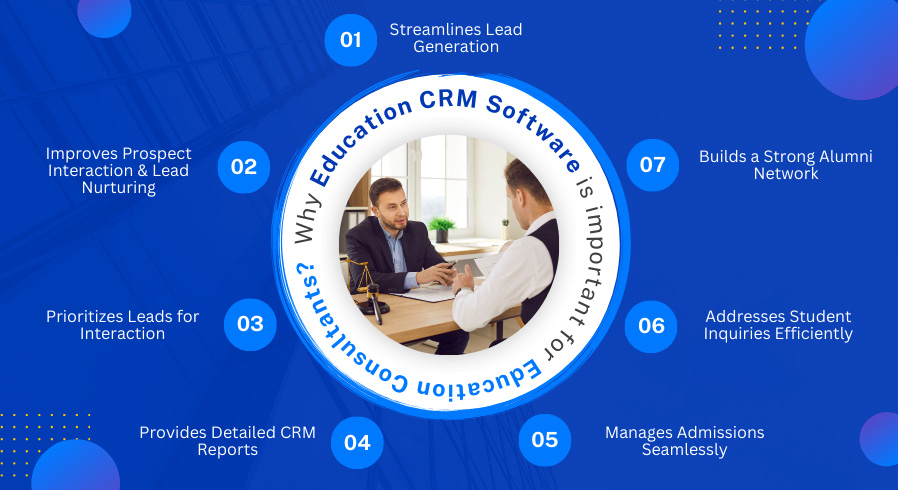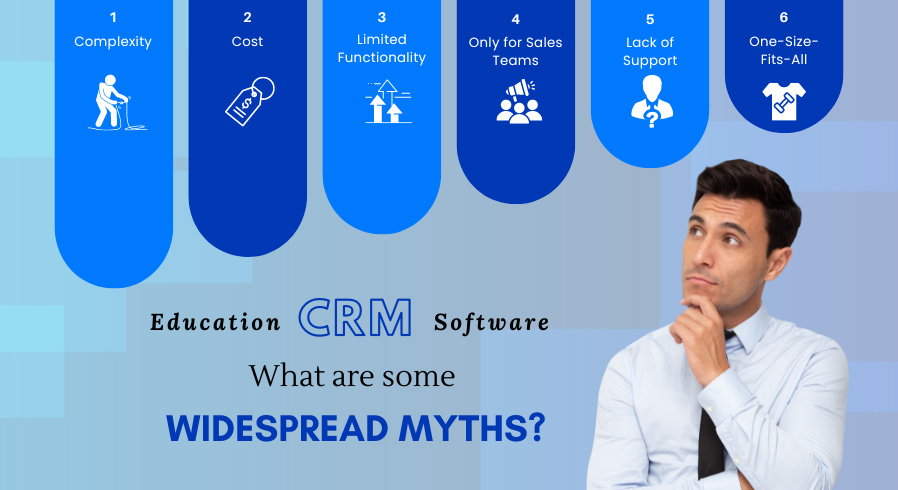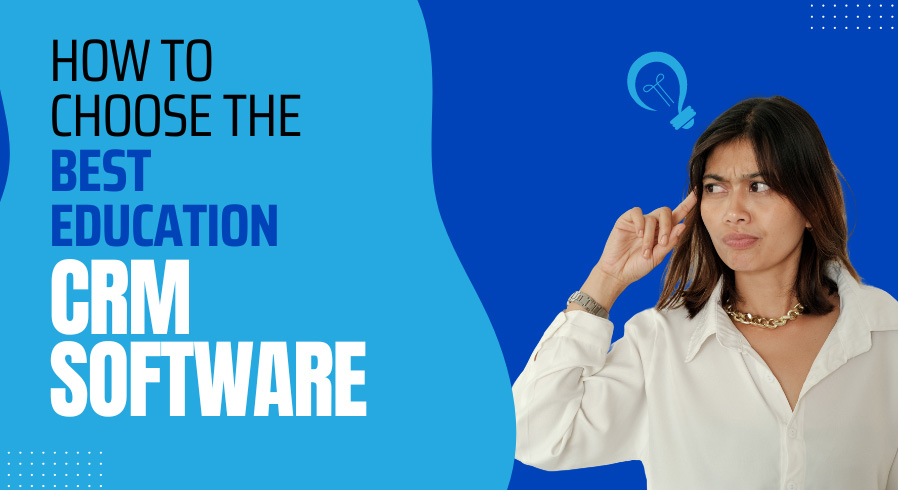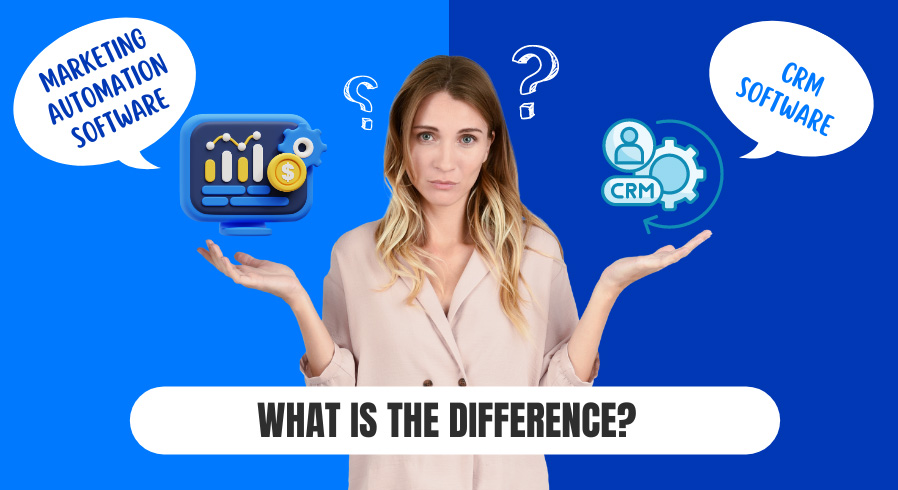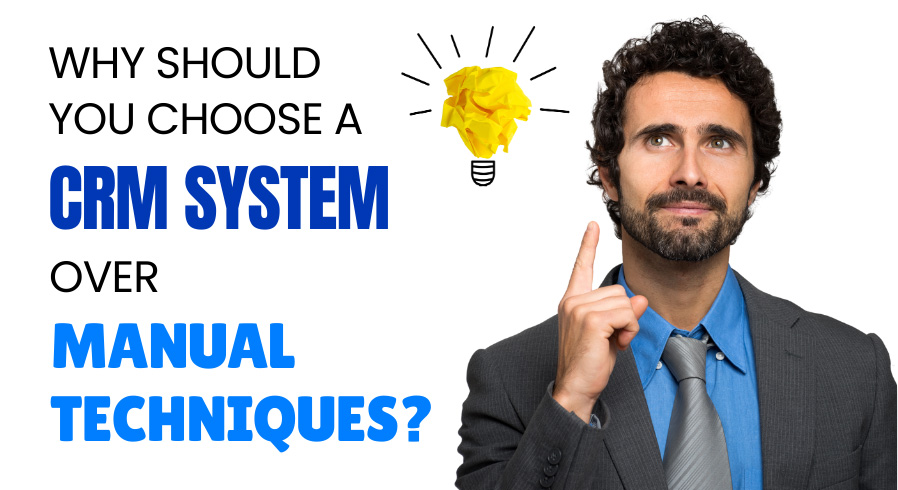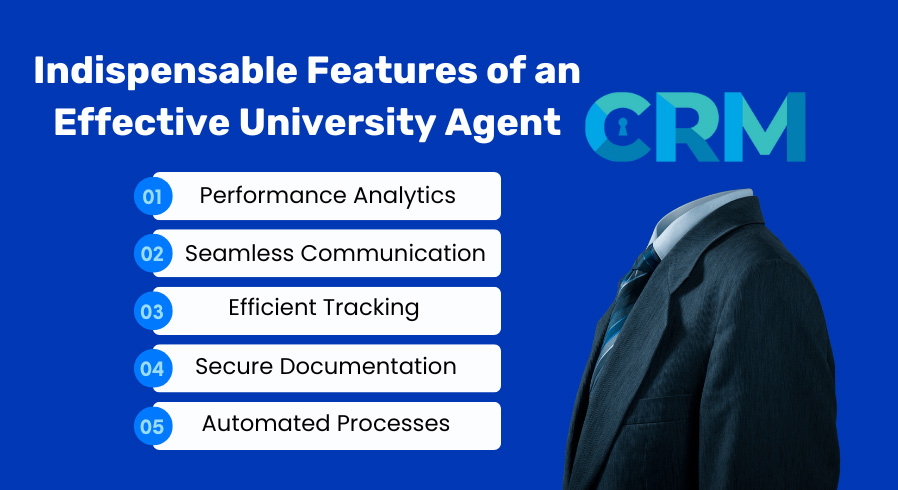Table of Contents

Do you want to take your educational institution’s growth and success to the next level? Yes? Would you like to attract more and more high-quality leads for your institution? Yes? Are you looking to draw the attention of your prospects and convert them into enrollments? Yes? Then, it is time to start working on your education sales cycle and help your prospects make an informed decision.
Did you know that best-in-class lead management is a step-by-step process that calls for strategic planning and its execution? As an entrepreneur, you can streamline your lead management journey by developing lead stages.
You can take the efficiency of your sales process to the next level with the help of your lead stages. Nonetheless, in order to start creating effective lead stages, you need to learn about lead phases in detail. Thus, you can expect to attract more and more high-quality leads and boost your education institution’s reputation, success, and growth.
Why Should You Emphasize Lead Stages for Your Educational Institution?
Irrespective of the industry, businesses leverage a similar journey when it comes to converting prospects into paying customers. However, the sales cycle in the education industry requires an in-depth understanding of each and every lead stage to convert as many leads as possible.
In other words, you must know how your leads navigate through various lead stages to increase enrollments. When you have clarity and a proper understanding of the lead stages in your education sales cycle, you can streamline your sales efforts. It also helps in lead nurturing and takes student conversions to the next level.
The main goal of all your marketing efforts is to acquire as many high-quality leads as possible. It marks the importance of emphasizing lead stages when you are all set to attract students to the courses or programs offered by your educational institution.
A Brief Introduction to Lead Stages in the Education Sales Cycle
A lead stage is a particular step in the education sales cycle when the goal is to convert leads into paying customers. When it comes to an educational institution, the goal is to convert leads into as many enrollments as possible.
Lead stages help you and your team monitor and manage leads when they navigate through the sales cycle. Thus, you can learn about the current location of your leads in the sales cycle and decide the right action in order to move the leads to the next lead stage.
As potential students lead toward enrollment, they navigate through various lead stages. Note that each stage comes with unique features of its own.
For instance, “Awareness” is the first stage where students first learn about an educational institution and its courses or programs. The next stage is called the “Interest” stage, which revolves around students when they start showing genuine interest in the institution’s offerings. This stage is about student engagement with the educational institution.
The “Consideration” stage is where students compare various shortlisted options and opt for recommendations from trusted sources to make an informed decision. The final stage is the “Conversion” stage, where students enroll in courses offered by the educational institution. Each lead stage contributes to the growth and success of an educational institution.
Lead Stages in the Education Sales Cycle in Detail
Lead stages in the education sales cycle are all about persuading students to enroll in various academic courses or programs. The more students are convinced by your marketing efforts, the more enrollments you can expect for your educational institution. Are you ready to learn about the above lead stages in detail? Yes? Then, let’s talk about each one of them one by one below:
Awareness Stage:
You already know that “Awareness” is the first stage in the education sales cycle. Students take adequate time to learn more about the shortlisted institution’s courses or programs.
In other words, this stage is about the exploration of different educational courses or programs. Students might or might not enroll in the courses they explore in the “Awareness” stage. For instance, your educational institution is offering a creative writing course, and students would become aware of the benefits of enrolling in the course in the “Awareness” stage.
When it comes to attracting students for enrollment, your marketing team must publish high-quality blogs, social media posts, and so on. The main goal in the “Awareness” stage is to educate your prospects about your institution’s offerings to help them make an informed decision.
Always provide valuable and to-the-point information to your prospects to leave a long-lasting impression in their minds. As a result, you can encourage them to enter into the next lead stages in your education sales cycle.
You can expect to acquire more and more leads and conversions in the following lead stages if you can convince prospects in the “Awareness” stage. It is time to work on the “Awareness” stage in your education sales cycle to take your buyer’s journey to the next level.
Interest Stage:
Your prospects have already learned about the existence of your educational institution and its courses in the “Awareness” stage. Moreover, prospective students are also aware of their interests, goals, and preferences regarding academic courses or programs. Hence, they are now all set to start comparing various courses to shortlist the most suitable options.
Your marketing team can leverage various effective marketing strategies to persuade prospects at this stage. Two of the most popular strategies in this regard are content marketing and lead magnets when it comes to taking the prospects’ interest and curiosity to the next level.
It is time to explain your educational courses or programs in detail to encourage prospects to become paying customers. Streamline your prospective students’ journey as much as possible to show that your educational institution is supportive and encouraging for students.
Consideration Stage:
This stage is where you need to stand out in the competition to win over the trust of your prospective students. Students evaluate various academic courses or programs and compare the benefits of each at this stage to make an informed decision.
Do you want to convert more and more prospects into paying customers? Yes? Then, your marketing and sales teams must be ready to resolve students’ queries with detailed answers. In other words, you need to show how your educational institution is different from others to increase enrollments.
The “Consideration” stage is a make-or-break point in terms of lead generation. This lead stage in the education sales cycle determines who is going to get enrollments and who is not.
Conversion Stage:
The final lead stage in the education sales cycle is the “Conversion” stage. Prospective students make informed decisions at this stage. In other words, they decide whether or not they want to enroll in the shortlisted academic course or program. That means your sales team needs to have best-in-class strategies in place to convince students to buy your institution’s courses or programs.
It is imperative to show why your educational institution’s academic courses or programs are the best fit for your prospective students. The “Conversion” stage is all about encouraging prospective students to take action whether it is scheduling an online or offline appointment or buying a course directly.
For instance, if a student is interested in a creative writing course, your sales team needs to convince the student to buy that course. Your team can cater to this goal by offering a clear and comprehensive overview of your institution’s academic courses or programs along with the benefits of enrolling in that course.
Furthermore, providing in-depth and transparent information regarding course fees and scholarship opportunities is mandatory to help students make an informed decision. Your team must also arrange simple online registration forms to streamline enrollments.
Needless to say, the “Conversion” stage is the most important lead phase in lead generation, as it is where prospective students convert into your educational institution’s students. You can convert more and more prospects into enrollments and take your institution’s growth, success, and popularity to the next level by streamlining the course-buying process.
In other words, students need to find the entire process simple and frictionless. Proper support must be given to students to help them get the best experience throughout the journey.
Wrapping Up
Do you want to take your educational institution’s growth and success to the next level? Yes? Hence, it is time to start working on the lead stages in your education sales cycle with your marketing and sales teams. Understanding the lead stages in your education sales cycle is imperative to convert leads into enrollments.
When your marketing and sales teams are well familiar with various lead stages in your education sales cycle, they can create more and more effective marketing and sales strategies. As a result, you can expect to take the conversion rate to the next level.
Do you want to streamline the entire process for your marketing and sales teams? Yes? Then, leveraging best-in-class CRM (Customer Relationship Management) software, such as ClientCtrl Customer Management software, helps your teams manage leads with ease. It further helps to convert more and more prospects into your educational institution’s students.
FAQs
Where Do I Find Prospective Students?
You can leverage the power of social media, online research, and other professional networking sites to create a solid database of high-quality leads.
How to know who is Your Institution’s Ideal Student?
You should evaluate some factors like educational background, career goals, location, and financial status to shortlist the most suitable students for your educational institution.
How Can I Attract More and More Prospects to My Educational Courses or Programs?
You should emphasize leads that align with your educational institution’s vision and mission. Moreover, it is also imperative to target particular interests or demographics to strengthen your prospecting efforts.
What Should You Consider When it Comes to Lead Qualification?
You can leverage interviews, questionnaires, and evaluations to analyze your leads’ suitability, interest, and readiness.
What to Do to Nurture My Leads Effectively?
Use targeted content, personalized interactions, and day-to-day follow-ups to take lead engagement to the next level.
What Type of Content is Ideal for Lead Nurturing?
Spread the word about your educational courses or programs. Share more and more information about campus life, upcoming events, and career success stories of former students.
How to Automate My Lead Nurturing Process?
You can leverage the power of chatbots, effective email marketing campaigns, and other available automated tools to automate the lead-nurturing procedure.
How to Close a Sale for Your Educational Courses or Programs?
Create a lucrative offer, resolve queries, address concerns, and wrap up the enrollment procedure.
How to Manage Common Sales Objections?
Prepare proper responses to common objections in advance regarding program eligibility criteria, course fees, location, and so on.
How to Ensure Student Satisfaction?
Ensure a welcoming and heartwarming environment for your students. Offer as many support services as possible during and after the enrollment procedure. Encourage student engagement as much as possible.


